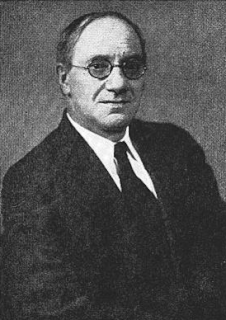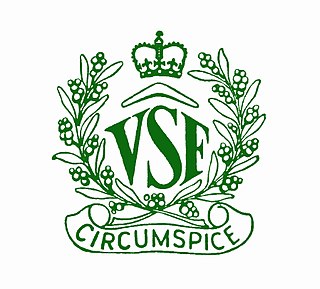
Forestry is the science and craft of creating, managing, using, conserving, and repairing forests, woodlands, and associated resources for human and environmental benefits. Forestry is practiced in plantations and natural stands. The science of forestry has elements that belong to the biological, physical, social, political and managerial sciences.

Public sector organisations in New Zealand comprise the state sector organisations plus those of local government.

Agathis, commonly known as kauri or dammara, is a genus of 22 species of evergreen tree. The genus is part of the ancient conifer family Araucariaceae, a group once widespread during the Jurassic and Cretaceous periods, but now largely restricted to the Southern Hemisphere except for a number of extant Malesian Agathis.

Rotorua is a city on the southern shores of Lake Rotorua from which the city takes its name, located in the Bay of Plenty Region of New Zealand's North Island. It is the seat of the Rotorua District, a territorial authority encompassing Rotorua and several other nearby towns. The majority of the Rotorua District is in the Bay of Plenty Region, but a sizeable southern section and a small western section are in the Waikato region. Rotorua is in the heart of the North Island, 60 kilometres south of Tauranga, 80 km (50 mi) north of Taupō, 105 km (65 mi) east of Hamilton, and 230 km (140 mi) southeast of the nation's most populous city, Auckland.

A forester is a person who practices forestry, the science, art, and profession of managing forests. Foresters engage in a broad range of activities including ecological restoration and management of protected areas. Foresters manage forests to provide a variety of objectives including direct extraction of raw material, outdoor recreation, conservation, hunting and aesthetics. Emerging management practices include managing forestlands for biodiversity, carbon sequestration and air quality.

Murupara is a town located in the Whakatane District and Bay of Plenty Region of New Zealand's North Island. The town is situated in an isolated part of the region between the Kaingaroa Forest and Te Urewera National Park, on the banks of the Rangitaiki River, 65 kilometres southeast of Rotorua.

Tāne Mahuta, also called God of the Forest, is a giant kauri tree in the Waipoua Forest of Northland Region, New Zealand. Its age is unknown but is estimated to be between 1,250 and 2,500 years. It is the largest kauri known to stand today. It is named for the Māori god of forests and of birds.

Te Matua Ngahere is a giant kauri coniferous tree in the Waipoua Forest of Northland Region, New Zealand. The tree's Maori name means "Father of the Forest". Although not as massive or tall as its neighbour Tāne Mahuta, Te Matua Ngahere is stouter, with a girth just over 16 metres (52 ft). It is believed to be the second largest living kauri tree, and to have the biggest girth of any kauri in the country. According to The New Zealand Herald, it has the biggest girth of any tree in New Zealand.
This article is the index of forestry topics.
Waiariki Institute of Technology was a tertiary institution based in the city of Rotorua, New Zealand, in the Bay of Plenty region in the central North Island. In May 2016, it merged with Bay of Plenty Polytechnic to form Toi Ohomai Institute of Technology.

The Yale School of Forestry & Environmental Studies (F&ES) is a professional school of Yale University. It was founded to train foresters, and now trains environmental leaders through four 2-year degree programs and two 10-month mid-career programs. Yale F&ES strives to create new knowledge that will sustain and restore the health of the biosphere and emphasizes the possibility of creating a regenerative coexistence between humans and non-human life and the rest of the natural world. Still offering forestry instruction, the school has the oldest graduate forestry program in the United States.

Raphael Zon was a prominent U.S. Forest Service researcher.

The Journal of Forestry is the primary scholarly journal of the Society of American Foresters. It aims to advance the forestry profession by keeping professional foresters informed about developments and ideas related to the practice of forestry. The journal publishes editorial and technical content related to management of forests and related natural resources. Articles are generally written for an audience of natural resources professionals, with topics spanning the many facets or disciplines of forestry. The Journal is currently edited by Keith A. Blatner. According to the Journal Citation Reports, its 2018 impact factor is 2.675.

Kura Kaupapa Māori are Māori-language immersion schools (kura) in New Zealand where the philosophy and practice reflect Māori cultural values with the aim of revitalising Māori language, knowledge and culture. The term Kaupapa Māori is used popularly by Māori to mean any particular plan of action created by Māori to express Māori aspirations, values and principles.
The Society of American Foresters (SAF) is a scientific and educational 501(c) non-profit organization, representing the forestry profession in the United States of America. Its mission statement declares that it seeks to advance the science, education, and practice of forestry; to enhance the competency of its members; to establish professional excellence; and, to use the knowledge, skills and conservation ethic of the profession to ensure the continued health and use of forest ecosystems and the present and future availability of forest resources to benefit society. Its headquarters are located in Bethesda, Maryland.

Jack Euan Henry was a New Zealand industrialist and company director, and a member of the well-known Henry Family.

Forestry in New Zealand has a history starting with European settlement in the 19th century and is now an industry worth seven percent of annual revenue. Much of the original native forest cover was burnt off and logged, however forests have been extensively planted, predominantly with fast-growing cultivars of the Monterey Pine. Wood chips, whole logs, lumber and paper products are exported from New Zealand.
Mary Sutherland was a notable New Zealand forester and botanist. She was born in London, England in 1893.

Alfred Albert Thomas William Adams, known as Thomas William Adams, was a New Zealand farmer, forester, churchman and educationalist.

The Victorian School of Forestry (VSF) was established in October 1910 at Creswick, in the Australian state of Victoria. It was located at the former Creswick Hospital, built in 1863 during the gold rush. The creation of VSF was one of the many recommendations of a Royal Commission held between 1897 and 1901 into forest degradation. The first tertiary forestry school in Australia, VSF was administered by the Forests Commission Victoria (FCV) until 1980, when VSF amalgamated with the University of Melbourne to become that institution's School of Ecosystem and Forest Sciences. From 1910 to 1980, 522 students completed the Diploma of Forestry at VSF.















